The LT40 Sawmill History: Sawhead and Control Panel Upgrades
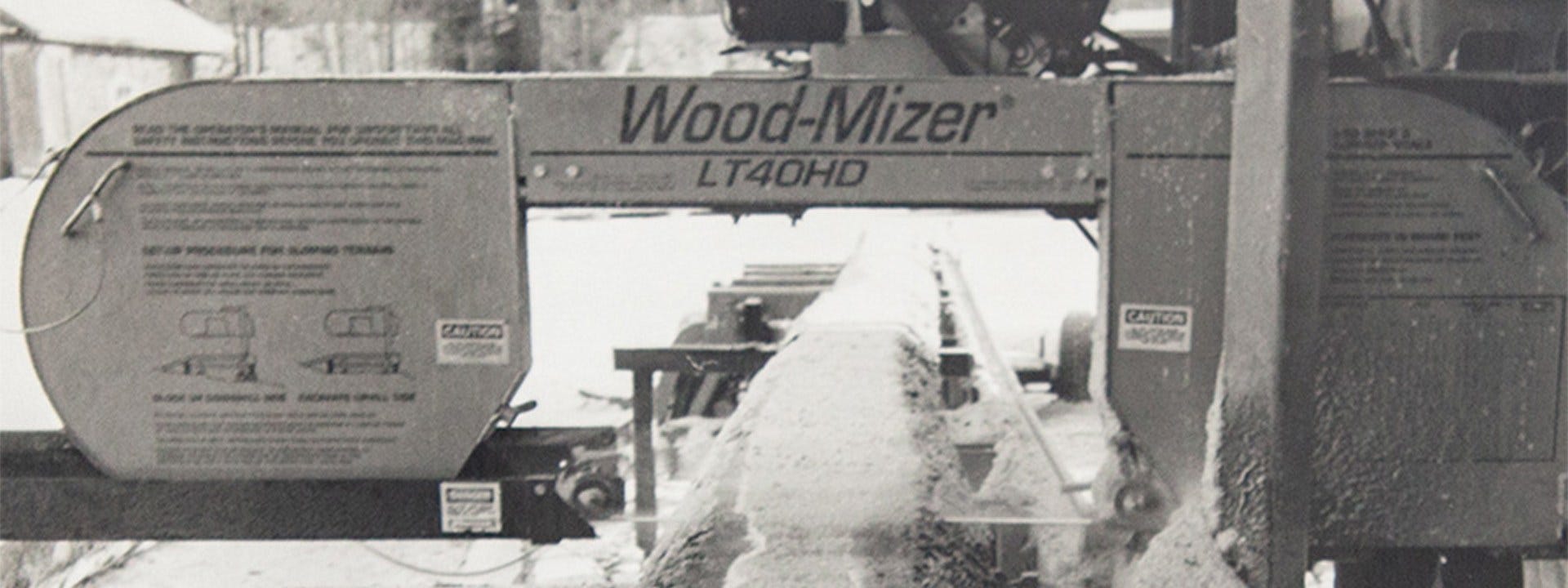
TODAY, the Wood-Mizer LT40 model sawmill created in 1982 is called „legendary” as it forever changed the way people convert logs to timber. It allowed everyday users to produce ready boards and beams quickly, and efficiently, and, most importantly, the mobility to process wood on-site. In the 80s, the LT40 sawmill also unlocked a new direction in building portable machines for processing logs. One of the main design features is the LT40 sawhead suspended above a long and flat sawmill bed. Although this feature remains, the LT40 has been modified and improved throughout the decades. The triggers of these upgrades were a combination of demand for increased efficiency and ergonomics of work, and the solutions, suggested by sawmill operators.
The Sawing Head with Rounded Sides
The first sawmills that came to Europe in the 1990s were the Wood-Mizer LT30 and LT40 models, with identical sawheads but beds of different lengths. The original sawhead was also commonly used in other machines, including the LT25 sawmill launched in 1994. “The LT25 sawmill featured the sawhead from the LT40 but was operated manually without any hydraulic functions of the bed. The LT25 made an attractive offer to customers because the full version of the LT40 was quite expensive for an average Pole in the 90s,” explains Robert Fret, a Customer Service Specialist with a long-time experience. “Many users started their business from the LT25 and gradually added more functionalities to their sawmills. In the end, they could use the upgraded version that was equal to a classical LT40 sawmill.”
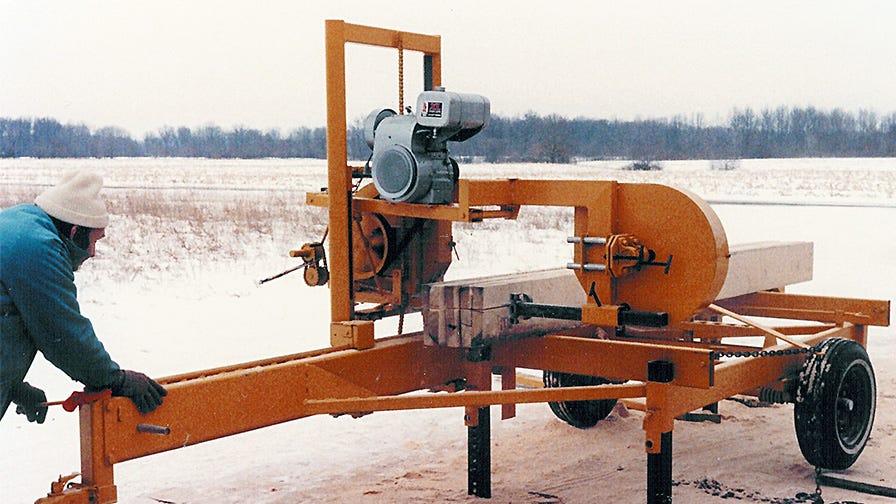

The contemporary sawhead of the LT40 sawmill in the STANDARD version allows for milling the logs as wide as 90 cm in diameter. At the same time, its shape has remained unchanged – it is still easily recognized by the rounded sides of the cover. The sawhead is mounted over the bed on a single, two-column mast and moves along the bed on a cluster of bearings and a steel rod. Many essential components and technical solutions have been left unchanged because, as the specialists say – „If something in the machine works well and the users have approved it, we shouldn’t change it,” explains Dariusz Kujawa, the Customer Service Manager who started his career in Wood-Mizer in the early 90s.
Initially, the sawhead of the LT40 was mounted on a rod using a set of six feed rollers including four on top and two on the bottom. In 1996 it was modified to eight rollers, while today, there are nine of them. “More feed rollers were required when we started to use heavier and more powerful engines. With more rollers sliding on the rod, the weight of the sawhead is distributed evenly on the surface,” explains Robert Fret.
The cast-iron blade wheels are of the same diameter, 483 mm, but the bearing on the free-wheel has changed. Previously, it was installed on two smaller bearings, but currently, it is set on one double-row bearing, which is much more durable,” says Robert Fret.
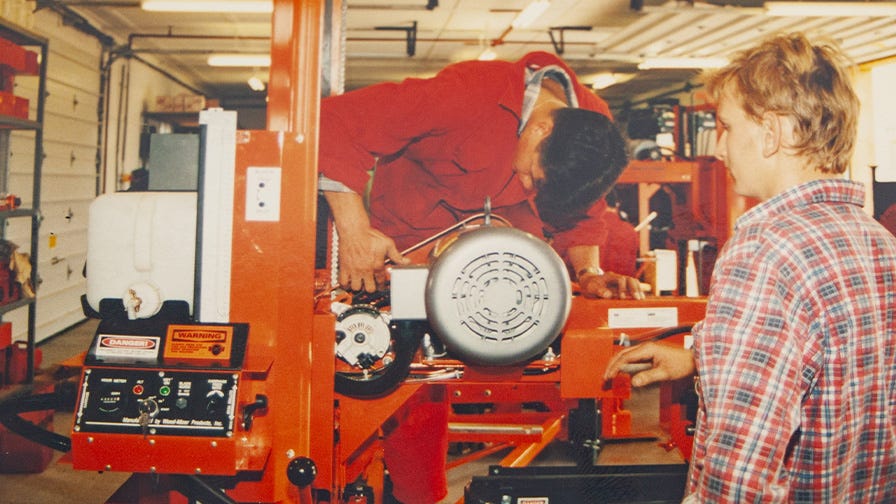

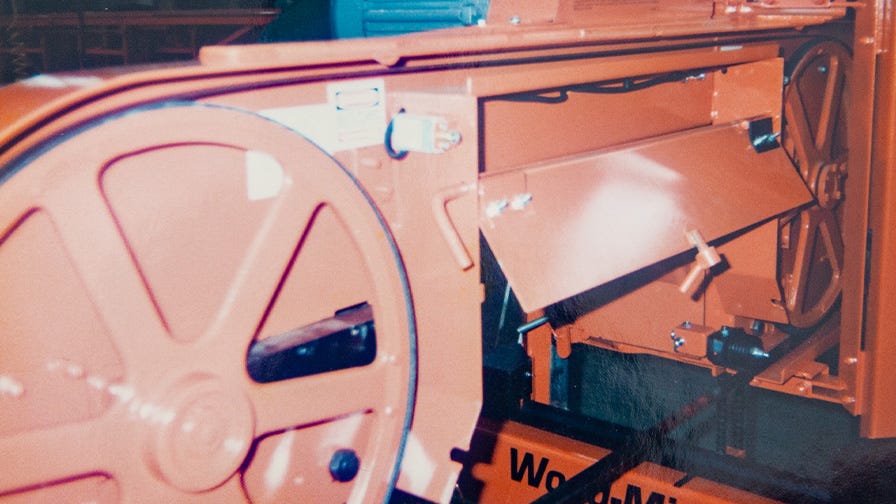

For higher efficiency, the drive train is now supplied with a triple drive belt (for 15 and 18.5 kW electrical motors) and a double drive belt (for 11 kW motor). “It’s a reliable solution because the wheel passing the power from the motor to the shaft with a belt is fully shielded, and it’s placed in a chamber separated from the saw blade. The sawdust will not make the drive train dirty,” ensures Robert Fret.
The first simple debarker in a 12V DC version became available in 1997, and in the following years, it evolved to the AC version. “A debarker is a useful tool because it extends the blade’s lifetime. The carbide tips welded onto the circular blade’s teeth are 5 mm wide, and with proper alignment, the debarker makes a cut on the log for the saw blade to enter into the clean wood. This is the solution that can extend the lifetime of a sawmill blade by approximately 30 percent,” points out Dariusz Kujawa.
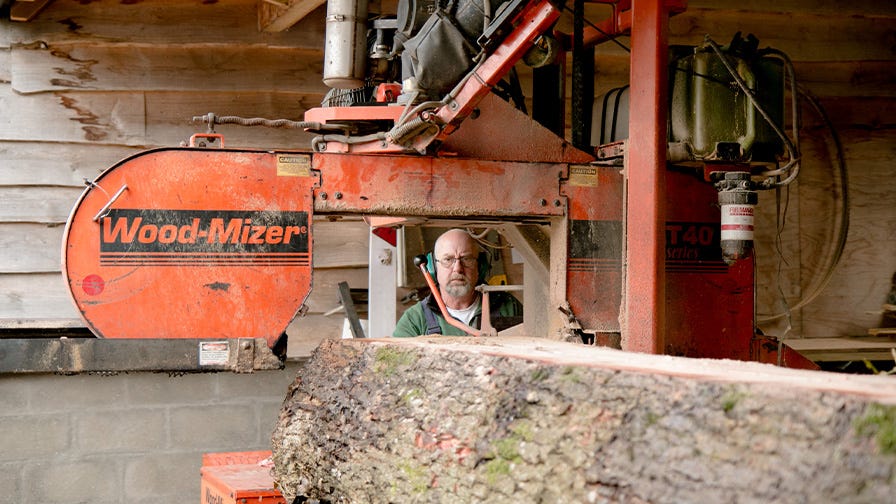

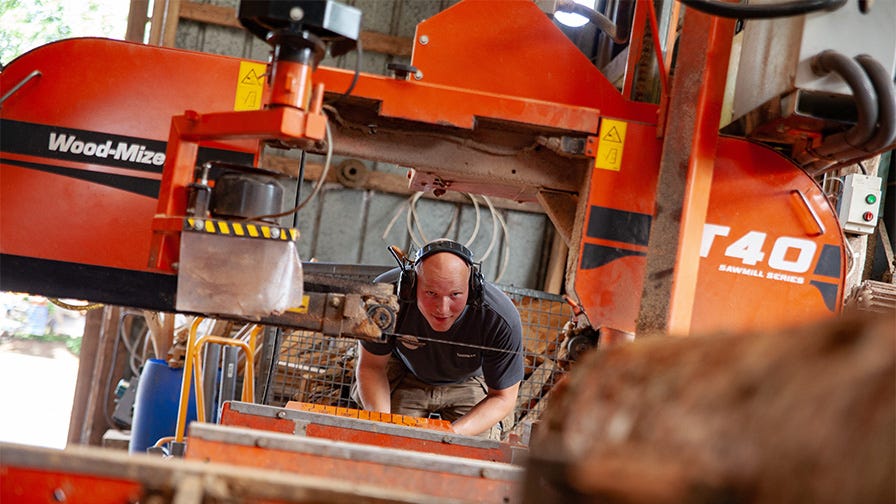

New Electric System
Introduced in 1988, the new AC electrical power supply system was a very substantial upgrade to the LT40 sawmill. The AC power system provides much more control for adjusting the speed and stability of the sawhead feeding. In the earlier machines powered by a DC system, the feed speed depended mainly on the battery’s condition. This modification also opened the way to using more efficient hydraulic systems.
„In 1996, along with the new operator panel, we applied additional electromagnetic cut-off switches for the feed system to protect the drum switches. As a result, we could extend the lifetime of these switches considerably. At the same time, more electrical safety systems for different sawmill functions were introduced, and they have been in operation in most of our machines until today,” says Dariusz Kujawa.
Ergonomic and Functional Operator Panel
In 1992, the LT40 sawmill earned a critical upgrade – a new operator panel was added, in which all sawmill functions were placed in one control box. Consolidation of the functions in a unified panel improved the safety and ergonomics of work. This change also created room for adding several interesting sawmill functions. “The new LT40 control panel was becoming larger and clearer over the years, allowing us to mount more optional devices. In fact, since that upgrade, the real evolution of the operator panel began,” points out Robert Fret.
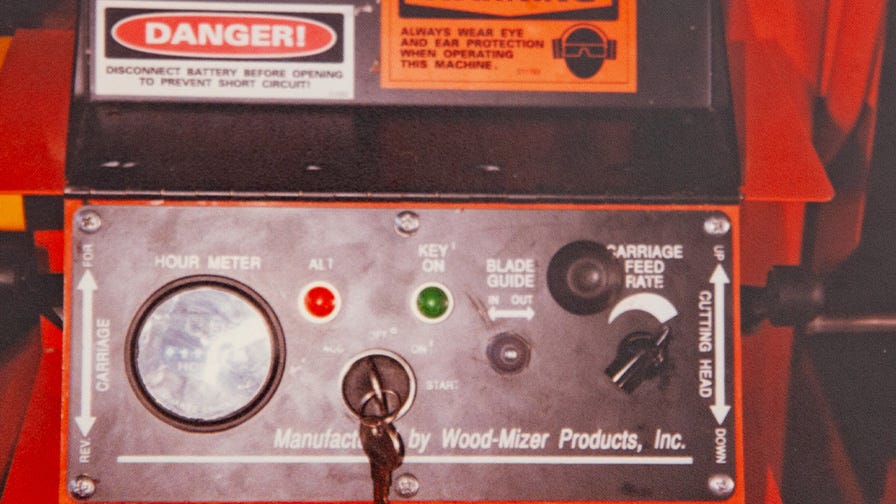

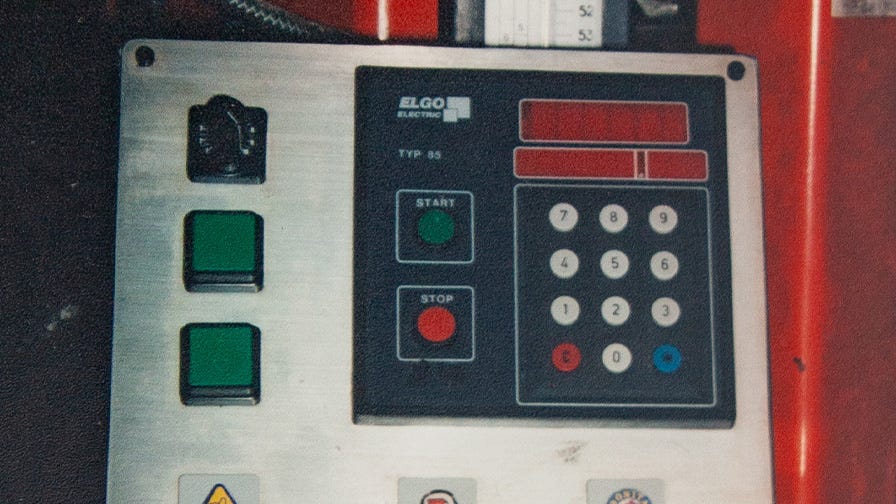

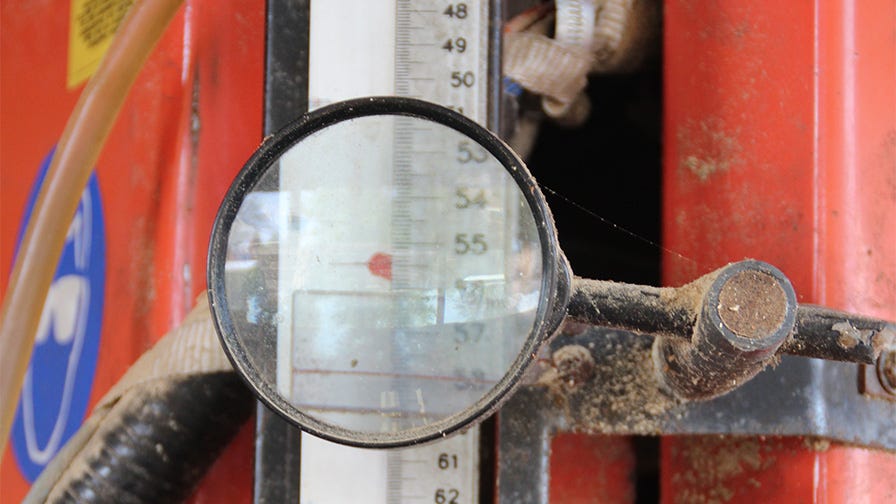

In 1997, the first device for automatic setting of board thickness became available, known as SimpleSet Setworks. It was a simple electronic device based on the encoder mounted directly on the up/down feed chain. “It was not an ideal solution because the readings were far from correct when the chain got dirty. These days, the LT40 sawmill with the electric motor is available with several different automatic board thickness systems based on a PLC controller - AccuSet1, PLC1, Accuset2, PLC2, and SW7, SW8, SW9,” says Dariusz Kujawa.
„In the sawmills that arrived in Poland at the beginning of the 90s, a unique method of adjusting the up/down feed speed was used. Instead of a typical inverter, a three-step pulley with different diameters was used for adjusting the feed speed. The operator had to manually change the V-belt's position on the pulley to adjust to the desired speed. Instead of the setworks for moving the sawhead vertically that we use today, the operator could put the crank handle onto the feed pulley and manually adjust the position of the sawhead. Although it took a little more time – around 10-15 seconds, it was a precise mechanism,” recalls Dariusz Kujawa.
“In the old days, the LT40 didn’t use any Setworks, so the new operators had to learn how to use two scales for measuring the board thickness. Once the Setworks came around, setting the thickness turned out quicker and easier, so nobody wanted to return to the old method,” remembers Robert Fret.
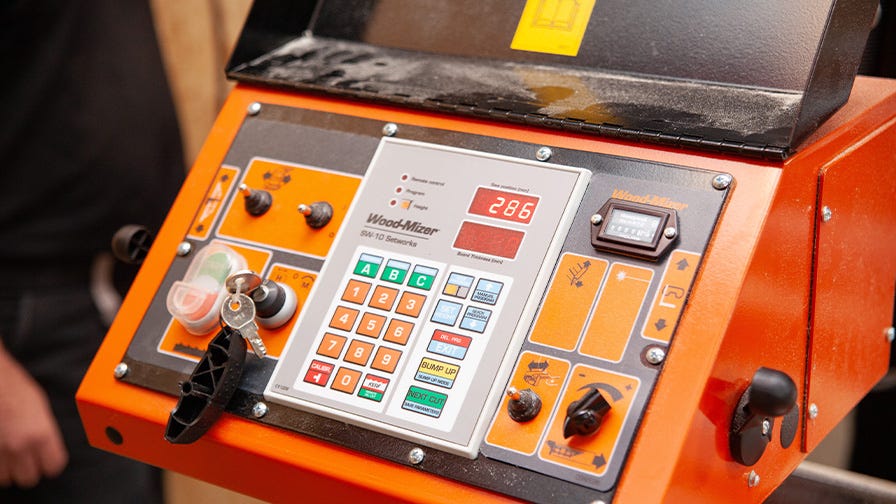

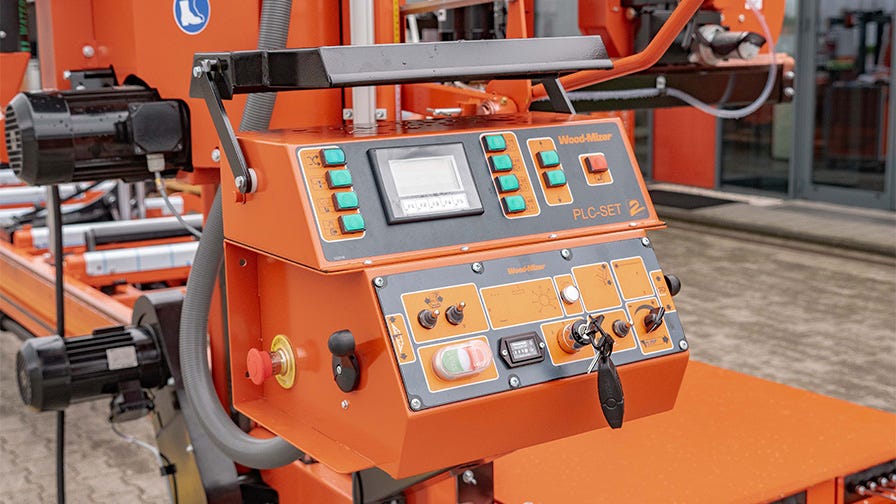

Users of the LT40 Sawmill Continue Improving It
Users and owners of the sawmills often suggest what might be improved in the machine, following the observations from everyday work with the sawmill or relying on the experience in milling various types of wood. For example, designing the LT40 sawmill with a wider sawhead came from sawmill users.
In 2020, a new LT40 sawmill version was launched – the LT40WIDE featuring a wider sawhead capable of cutting logs up to 100 cm in diameter. It allowed many businesses to increase their productivity to a great extent. “Back in the days, when sawmillers needed to cut logs over 1 m wide, that put them in a hard situation because the standard LT40 allowed for the maximum diameter of 90 cm. These days the problem is gone because customers can easily buy the LT40WIDE sawmill and mill larger logs. Sawmillers and carpenters realize that a wide board looks better and can be sold at a higher price. Besides, a higher cutting diameter also means more possibilities for dividing the wide board according to the grain patterns,” says Robert Fret.
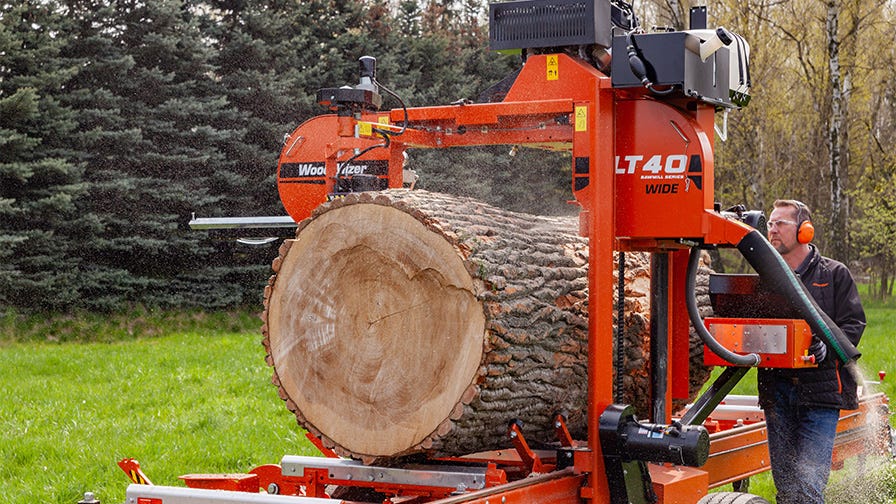

Read more from the series:
- Revolution on Two Wheels – The Birth of a New Sawmilling Technology
- The LT40 Sawmill History: Sawhead and Control Panel Upgrades
- The LT40 Sawmill History: Blades and Blade Guide System Upgrades
- The LT40 Sawmill History: Engine Upgrades
- The LT40 Sawmill History: Bed and Hydraulics Upgrades
- Wood-Mizer LT40: The Best Sawmill for Your Business
***

